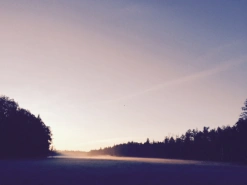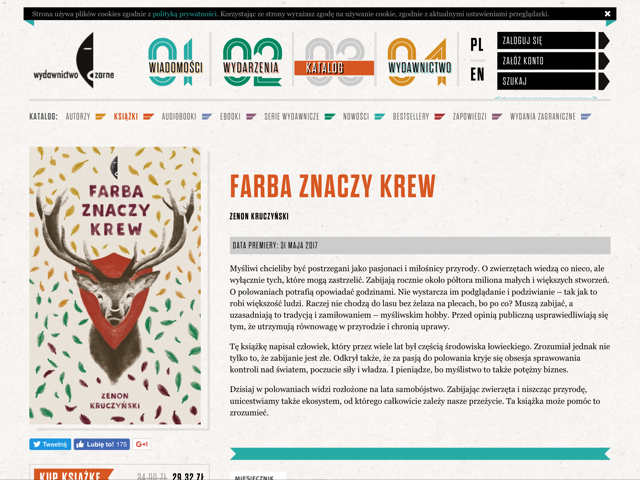
The boy is eager to hunt with his father. He cannot wait. He would have smuggled himself in a car trunk to the hunting field if he could: anything to be closer to his father. Hunting gives them both, father and son, the sense of camaraderie in action. It’s a man’s sport. Silence is a prerequisite. Children are not welcome to the hunt because nothing can prepare them for watching a wild boar at full gallop suddenly collapsing to the ground. Out of shock, in protest, little boys cry.
But this boy will overcome his disgust, fear, and unease to earn his father’s approval. He loves his father in a simple way. He believes in communicating through actions, not words.
Thanks to the hunting they become providers. When they hunt for ducks, no duck is left behind. All ducks are collected from the field. It is the boy’s task to wring their necks, if necessary, to complete the process of dying. The ducks are then brought home, and mother is made happy. The family guts them at home ( he remembers the smell of intestines, when perforated by a bird shot), then cooks, and finally eats them. Conscientious and grateful eaters, they are careful of flattened bullets and broken bones. The boy leaves but a pile of chewed bones on his plate.
Father and son are no fancy hunters. In the 1960s people still hunt to eat. The boy is also a skillful fisherman. When he carries four buxom pikes through the village, he feels uplifted when he overhears other people craving the bounty he is planning to lay down, like an offering, at his father’s feet. A moment later he feels terrible because his father places a pike’s heart, like a red flake, right in the palm of his hand, where it is beating for what seems like a long time after the gutting.
The boy works as a whipper at the hunt. He cheers every rabbit who manages to escape, unless the hunter who missed the shot is his father.
For the hunting, father and son use home-made bullets. For bird shots they use blanks, greenish shooting powder, cardboard, and felt. They also cast their own lead bullets, two at a time, for larger game. The book doesn’t specify where this production takes place (in the back room, in the basement?), but we picture the boy and the man busy at the table where a wooden box with compartments and a mold for casting lead bullets rest next to lead-filled tapes, a conical peg, and various pouches, tin cans, and small jars, barely exchanging any words while calibrating, folding, and turning the crank for what seems like hours and hours.
Random images of hunted animals inhabit the writer’s memory. The first deer he sees shot dead is a three-legged buck, crippled, obviously, after some earlier incident that nevertheless had left him alive (the skin with fur grew over the lost hoof). He is glad that it wasn’t his father who shot the crippled deer.
No stag, he explains later, is allowed to die a natural death. The only remaining mystery is whether it will be a tourist hunter who paid a fee in euros, or a local one who is going to bring him down.
They go to the forest on a motorbike: the boy watches his father breathing with relief at not having shot the wild boar who turns out to be a female with a cluster of piglets behind.
It’s at dawn in August when at last they round on their first buck. It might have been an ordinary summer day for the two does and a buck, but the father and son use a trick to provoke the latter to expose himself to a shot. The does flee (the scientists have been able to prove that animals who are victims of trophy hunting develop a permanently heightened level of stress). They find the buck toppled in the grass, intestines oozing from the hole in his belly. The father has to slash the buck’s throat, while the son tries to hold down the animal’s hind legs. The buck screams and slackens at last. On their way back, with the body of the buck on his knees, the son feels that “something very wrong has happened.” The father, too, is overcome by sadness. Both men, equally dispirited, return home.
The boy grows into a man who watches wild boars running for their lives, dodging bullets to no avail, and hopes he shouldn’t be the one to shoot them. But he does shoot them, almost involuntarily, as if his gun was emitting blasts on its own accord, a hunter who is about to give up hunting, dejectedly counting the corpses and accepting praise from his hunting mate (men hunt in pairs).
Kruczyński does not appeal to emotion. He doesn’t demand sympathy–at least not for himself. He did not write this book to exonerate himself. In the interviews he talks about addiction, and when he does, he makes the unhappiness of an addict palpable, the sense of unease and woe of someone who finds a momentary happiness only when watching the rabbits playing with buds and stalks and, enchanted, lets them live.
After he quits, he will appeal to reason.

Zenon Kruczyński, Farba znaczy krew. Wołoniec: Wydawnictwo Czarne 2017.